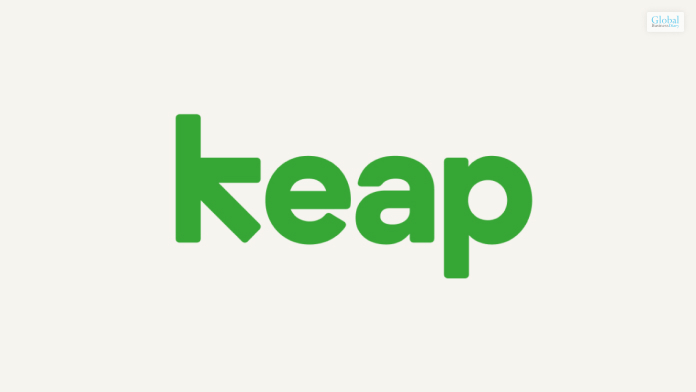Technology has made a lot of things easier. Transit is one of the important things on the list. You would agree with me on that.
Coming to navigation, I think that navigating the best route to work is one of the main challenges that we face every day.
So, it's important that we know the easiest and fastest commuting routes to reach our offices.
Want to know the route and navigate to work? Well, you have the internet!
Want to head to a restaurant in a foreign country? Well, again, the internet can come to your rescue.
These are just some of the examples of how you can benefit from the internet and, in this case, Google Maps!
If you were searching for how to navigate to work, you have come to the right place. So keep on reading this article till the end to learn more…
Why is it Hard to Navigate to Work?
The question is self-explanatory. I mean you know how much traffic is there in the American streets. And It's not the story of New York only. California and Los Angeles suffer from the same problem.
I admit that New York has the worst traffic in the whole of the US. If you are stuck in the center of the Big Apple, you may come out of the traffic one eternity later.
On a serious note, average commuters need about 24 minutes 50 seconds to drive 6 miles in this region.
So far, we knew that New Jersy has the worst traffic. But all the states are catching up. Around 14.3 million vehicles were registered in California alone, in 2021.
The story of Los Angeles is no different. The streets of Los Angeles have the highest traffic from 7 am to 10 am. The situation repeats from 4 pm to 7 pm. So, you see that commuting during office hours is very poor in the US.
Just A Second: Which Navigation Are We Talking About?
Well, do not get me wrong, but there are a lot of times when you may ask someone a question about “how to navigate to work,” and they ask you which navigation you meant.
And they are not entirely wrong, to be honest. One of the main reasons for that to happen is because there are two forms of navigation that you may be talking about:
1. Navigating to work in terms of direction,
2. Navigating the workplace in terms of politics.
Ever thought of it this way? Well, now you have to!
If you are still confused about which one or what and how to do them in the correct way, I have got you covered. In this article, I have explained the ways you can navigate to work. So if you want to know more, keep scrolling…
Navigate To Work: Finding The Route To Your Workplace
This is one of the most searched topics if I am being absolutely honest. And it is not a very hard guess at the same time.
You see, there can be times when you move out of your city or country and start a new life in some other foreign land. You look for a job and want to start your life successfully. But how will you reach the workplace if you do not know the route to the organization?
This is why most people use technology, or the internet, and the services that it provides to navigate to work. And you guessed it right— this one is different from how to navigate politics at work.
In order to navigate to work, you can always make use of the ever-so-friendly Google Maps! But how? Tell me to help you out with that.
Navigation In Google Maps
Google Maps is one of the most used programs that Google provides. It has helped a lot of people, including me, reach a particular place where they did not know the address. Every time I wanted something to navigate me to work, I could only think of Google Maps.
Why use it? Well, if you want a helpful guide that provides you with turn-by-turn navigation instructions, then Google Maps is the friend you need.
The map shows you the direction as well as the time it might take for you to reach the destination. If you are driving and think that you cannot look at the phone (which you should not), you can put it beside you and let the AI-powered tool guide you by voicing the instructions.
In order to navigate to work with the help of Google Maps, you need to do the following things:
Google Maps On Android
Open your Google Maps app
Search for the destination that you want to travel to
Tap on the Directions option at the bottom left of the screen
Select the mode of transportation, be it by car or by walking.
Select the route
Tap on the start option to start navigation
End navigation when you reach your destination.
Google Maps On iOS
Open your Google Maps app
Search for the destination that you want to travel to
Tap Directions
Select the mode of transportation. There are many that you will be able to see, like:
Driving:
Transit:
Walking:
Ride shares:
Cycling:
Flying:
Change the routes if you think there are better ones available
Follow the navigation by hitting the Start option
Click on the Exit Navigation option after arriving at your destination.
Imagine you wanted to try out a new restaurant in between the time you got for lunch. But you are yet not very sure about the routes. So do you think you cannot be back at the office on time?
Absolutely not. You can still use the same app and navigate back to work. Life has never been easier!
“Navigate to work” Option Now Working?
Many of you complain that the precision of “navigate to work” option of google has reduced. I researched myself and now I think that the claim is true.
Either you type “navigate to work” or “navigate home”. Both showed precise locations if I entered the correct address. I only had to save these two addresses as “work” and “home” respectively.
Both these options worked perfectly fine for the last few months. But Google failed to optimize a new bug.
Now Google maps work better if I specify the name of the place. For example, if I type Hoboken office, NJ, it will show me precise results.
But typing “navigate to work” does not show very accurate results.
Personally, I was directed to nearby places that had the term “work” in their names.
Google Maps Navigation - A Few Things To Know
You must have already understood how to navigate to work with the help of Google Maps. It is one of the most widely used navigation services that you will find nowadays. The best things about Google Maps are its versatility and how you can easily use the application in a simple and effective manner.
According to the official source of Google Maps,
“Maps shows you directions and uses real-time traffic information to find the best route to your destination. With voice navigation, you can hear traffic alerts, where to turn, which lane to use, and if there's a better route.”
Google Maps will not only measure the distance between two locations but will also provide directions to you, whether you are in a vehicle or not. Furthermore, there are directions available for people using public transport. In the age of the Internet, it is difficult to imagine a GPS system without the Google Maps application.
Benefits Of Google Maps In Your Navigation Process
There are several benefits of Google Maps in your navigation process. You need to be well aware of it while meeting your objectives with complete ease. Some of the core factors that you must consider from your end are as follows:-
1. Accurate Direction
Google Maps provides precise and up-to-date directions, helping you reach your destination efficiently. It considers real-time traffic conditions, suggesting the fastest routes. You will get the required directions that can help you in getting your objectives within a specific time.
2. Multiple Transportation Modes
It offers various travel options, including driving, walking, biking, and public transportation, with detailed instructions for each mode. The modes of transportation that can help you to reach your destination faster will be revealed by Google Maps.
3. Live Traffic Updates
Google Maps uses real-time traffic data to suggest the quickest routes, helping you avoid traffic jams and delays. You will get the live updates of the traffic. Once you make your choices, it can make things easier for you to attain your goals with complete ease.
4. Street View
This feature allows users to see a 360-degree view of streets, landmarks, and buildings, aiding in easier navigation in unfamiliar areas. You will get a complete view of the streets once you install Google Maps on your phone.
5. Offline Maps
You can download maps for offline use, which is beneficial in areas with poor or no internet connectivity. Once you follow the correct process, things can become easier for you in attaining your objectives with absolute ease.
6. Location Sharing
You can share your real-time location with friends or family, making it easier for them to track your journey or meet up with you. Google Maps suggests nearby restaurants, gas stations, ATMs, and other points of interest based on your location.Overall, Google Maps simplifies navigation, offering convenience, accuracy, and a plethora of features that enhance the overall travel experience.
What Are My Best Options To Navigate to Work?
In the US, around 70% of the people use Google maps daily. However, experts say that the use of Waze navigation and Apple maps is increasing.
Recently young users found the voice interaction on Waze easier. It has a better AI for understanding where I wat to go precisely.
I also get a voice prompt while using Waze. So, I can tell if it is guiding me along the best route. I can set the parameters like:
“I need to reach office within 30 minutes or by 9.30 am”
I will get live traffic status updates and suggestions too. It leverages me to plan the best route for my commute.
CityMapper is on the rise too. Its specialty is that it shows the live traffic easily. While I navigate to work, it can send me live status updates.
But only 887,506 Americans are using CityMapper.
When To Use Google Maps? - Usefulness Of Google Maps
Google Maps is a navigation system that becomes really handy when you visit an unfamiliar area or if you are on a trip to a new place. There are even audio queues that come with the voice navigation system of Google. These ques help you by giving you directions as you look for where to go.
Google Maps comes preinstalled on your phone if you use an Android phone. However, if you use an iPhone, you can install the app by going to the App Store.
It might happen that you have gone to a remote place, and you could not get access to the Internet. In these cases, Google Maps can help you a lot, as it comes with an offline feature as well. Another interesting feature is that the app lets you customize it as per your needs.
Another great feature of Google Maps is that it allows you to search nearby places like restaurants, groceries, gas stations, and more. You can search from a broad category of places or search a particular place by using the search bar.
The app, in turn, will show you suitable locations that are near your current route, including the user ratings of these places and how much will it take for you to visit the place. You will also get many other suggestions, like how to get to the place fast. You can also zoom the map by dragging up or down your fingers.
Frequently Asked Questions!! (FAQs) :
Now that you have reached the end of the article, there still might be certain questions that you can be confused with. That is the reason I advise you to go through some of these questions below that readers frequently ask.
Q1. What Does Navigating The Workplace Mean? When it comes to navigating the workplace, the meaning is completely different. First, it means getting to know your way around the workplace. This includes knowing the people who work in your company as well as the norms and practices of the company. Q2. How To Use Google Maps To Navigate To Work? If you are trying to use Google Maps to navigate to our work, there are a few things that you need to do. Here are the steps:• Open google maps• In the search bar of the platform, type in the name of the destination that you want to go to.• Tap the directions option that will be available at the bottom.• Choose your preferred mode of transportation.• Click on the Start △ to start navigation. Q3. What Do You Need To Navigate To Work? If you are trying to navigate to work with the help of your smart devices, there are a few things that you need to have. One of them is the internet, and the other is the GPS navigator.
Bottom Line: Technology To The Rescue!
While it can be difficult most of the time to get to the workplace, especially if you do not know where it is or if you are in a foreign land for the first time, times have become easier. Now it is not that difficult for you to navigate to work. You can do that simply with the touch of your fingers and the internet.
In case you were searching for the answer to how to navigate to work, I hope that this article has been of help to you. If there are any other queries related to the same, feel free to write them down in the comment box below.
Read More:
Credit Card Frauds and What You Can Do to Avoid Them
How To Run A Social Media Campaign At A Low Budget For An Aspiring...
SUIC Stock – Present Price, Forecast, Statistics – Should You Invest In It In...
Mar 14, 2024
















